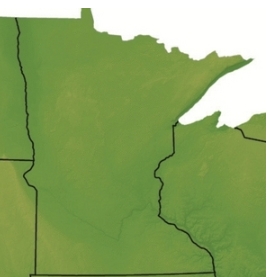
Minnesota’s current SAF tax credit provides a $1.50 per gallon incentive for biomass-derived SAF that achieves at least a 50% reduction in lifecycle greenhouse gas (GHG) emissions. To be eligible for the credit, the SAF must be produced in Minnesota or blended with aviation, gasoline or jet fuel in Minnesota, and sold in Minnesota to a purchaser who certifies that the SAF is for use as fuel in an aircraft departing from an airport in Minnesota. A qualifying taxpayer may claim a credit for either blending or producing SAF. If the SAF is blended with aviation, gasoline or jet fuel, the credit is only allowed for the portion of SAF in the blended fuel.
Currently, Minnesota’s SAF tax credit is in place for SAF produced or blended within the state from July 1, 2024 through June 30, 2030. SF 1312 aims to extend the credit for five years, through July 1, 2035. The bill also aims to incentivize additional GHG reductions by allowing qualified taxpayers to claim a supplemental tax credit of 2 cents per gallon for each additional whole percentage carbon intensity (CI) reduction beyond 50%, with a cap of 50 cents.
The value of the SAF tax credit would be capped at $7.4 million per fiscal year for 2025 through 2027, and at $2.1 million annually for fiscal years 2028 through 2035. Any amounts not used in a particular fiscal year can be carried forward.
SF 1312 was introduced by Minnesota Sens. Anne Rest, Bill Weber, Robert Kupec, John Jasinski, and Scott Dibble on Feb. 13. Companion legislation, HF 1669, was introduced in the Minnesota House on Feb. 27.
“Sustainable aviation fuel has the potential to rapidly decarbonize the aviation industry, provide additional revenue streams for a wide array of farmers, communities, and industries, and create good-paying jobs throughout Minnesota. But this only happens if we take steps to bring production to scale,” Kupec said. “This is more than just a win-win for our state, it’s a win-win-win-win. We can support our farmers, reduce our carbon emissions and grow our economy, and this bill will help us do so.”
“This is an economic jet engine for the state of Minnesota,” Jasinski said. “The potential benefits for Minnesota are massive: new facilities, thousands of jobs, and incredible new opportunities for farmers to sell their crops and repurpose waste materials. We aren’t trying to just meet the demand for sustainable aviation fuel in Minnesota; we are aiming to meet the global demand. We have the opportunity to keep Minnesota at the forefront of innovation and make sure our economy takes off right alongside it.”